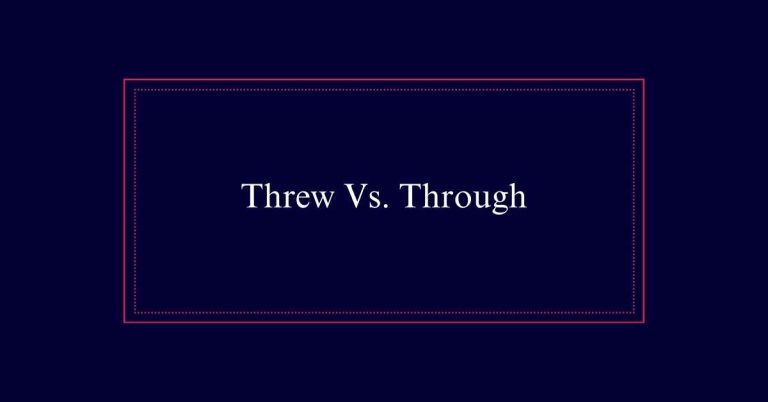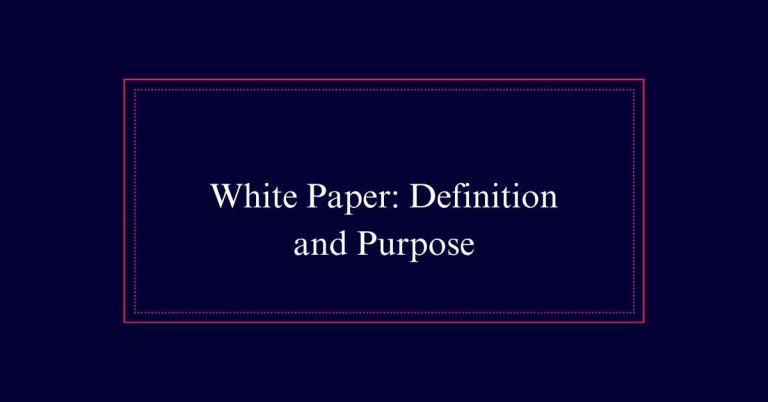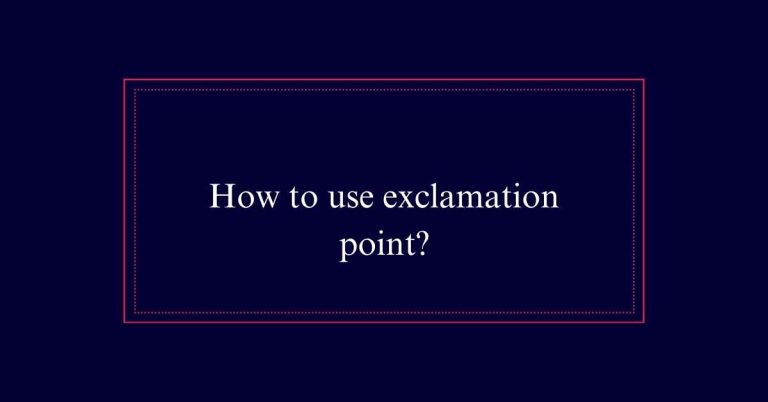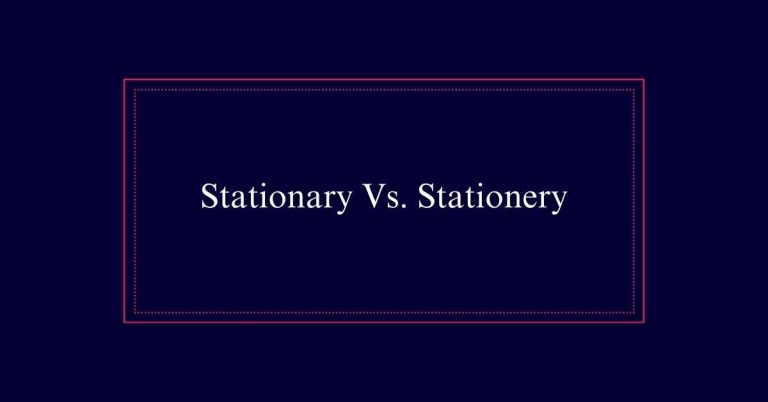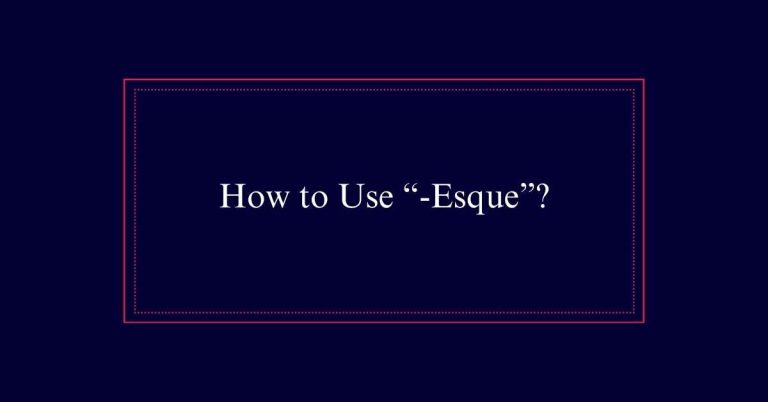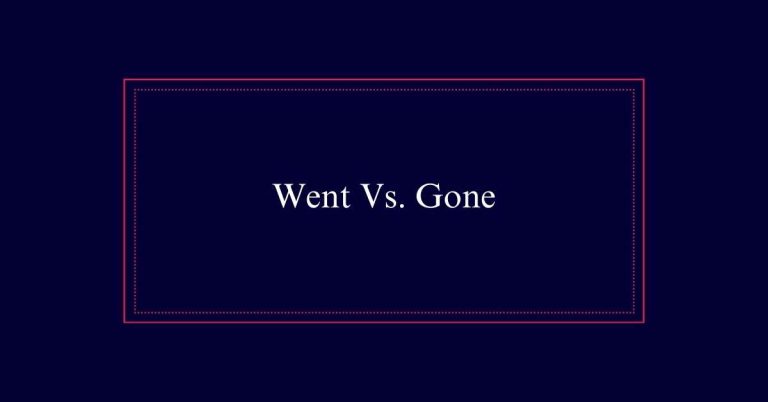Here, Here or Hear, Hear?
‘Hear, hear’ is the correct expression to use when showing agreement or support. The phrase originated in the late 17th century as ‘hear him, hear him’ in British parliamentary debates. Over time, it was shortened to ‘hear, hear’ and became a standard way to signify approval and highlight notable remarks. It is commonly misunderstood and misused as ‘here, here,’ but ‘hear, hear’ is the proper form. Pronunciation confusion is a factor due to the similar sounds of ‘hear’ and ‘here.’
Origin of ‘Hear, Hear’
How did the phrase ‘hear, hear’ come into existence?
The phrase ‘hear, hear’ traces its origin to the late 17th century. It comes from the longer expression ‘hear him, hear him.’ This original form was commonly used in the British Parliament to draw attention to a speaker’s words.
By the 18th century, it had evolved into the shorter, more efficient ‘hear, hear.’ This change made it easier for members to express agreement quickly during debates.
The phrase signifies that the listener finds the speaker’s points remarkable or agreeable. Over time, ‘hear, hear’ has become a staple in parliamentary language and is used to show support or approval in various formal settings.
Evolution From ‘Hear Him, Hear Him’
The phrase ‘hear, hear’ evolved from the longer form ‘hear him, hear him’ used in the British Parliament in the late 17th century. Initially, it served as a call for attention, urging members to listen to the speaker.
Over time, its usage condensed to ‘hear, hear,’ reflecting a shift towards a more succinct expression of agreement. By the 18th century, this shorter version became prevalent, symbolizing approval or endorsement of what was being said.
This evolution not only streamlined parliamentary language but also reinforced the culture of vocal support in debates. Today, ‘hear, hear’ continues to be a powerful tool for expressing collective assent and reinforcing solidarity in discussions.
Parliamentary Usage
In the UK Parliament, ‘hear, hear’ is a crucial expression used to signify agreement with a speaker’s statement. Originating in the late 17th century, it evolved from the phrase ‘hear him, hear him.’ This succinct form is now a staple in parliamentary debates, reflecting a culture of lively discussion and engagement.
| Aspect | Description | Example Usage |
|---|---|---|
| Origin | Late 17th century | ‘Hear him, hear him’ |
| Evolution | Shortened in the 18th century | ‘Hear, hear’ |
| Parliamentary Use | Shows agreement | MPs shout ‘Hear, hear’ |
| Modern Context | Used globally, including online discussions | Social media comments |
Common Misunderstandings
Many people mistakenly use ‘here, here’ instead of the correct ‘hear, hear’. This common misunderstanding arises due to the similar pronunciation of ‘hear’ and ‘here’.
Such homophones often lead to confusion, even if their meanings are entirely different. ‘Hear, hear’ originates from the 17th-century phrase ‘hear him, hear him’ and signifies agreement or support.
Conversely, ‘here, here’ does not convey the intended meaning and is incorrect in this situation. Despite its frequent misuse, it’s essential to use ‘hear, hear’ properly to maintain clarity and precision in communication.
Pronunciation Confusion
A significant reason for the confusion between ‘hear, hear’ and ‘here, here’ lies in their similar pronunciation. Both phrases sound identical, although they have different meanings. ‘Hear’ is a verb, meaning to perceive sound, while ‘here’ is an adverb indicating a location. This homophonic nature makes it easy to mix them up in both spoken and written contexts.
People often use ‘hear, hear’ to show agreement or support, a practice rooted in parliamentary traditions. Meanwhile, ‘here, here’ has mistakenly gained acceptance due to its phonetic similarity. The confusion is understandable given the identical sounds, but it’s important to distinguish between the two to maintain clarity in communication.
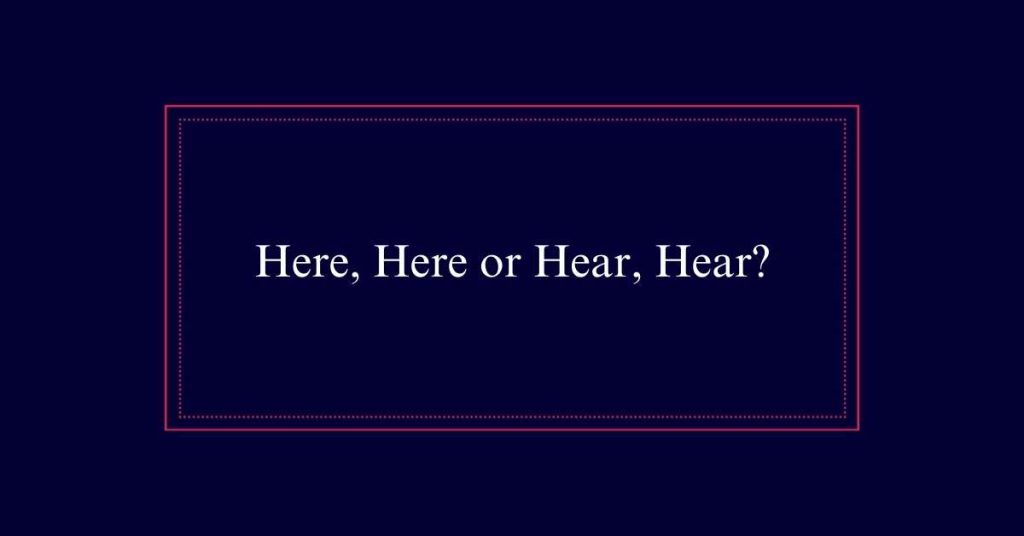
Historical Examples
Understanding the historical context of ‘hear, hear’ can further illuminate its proper usage and significance. Originating in the late 17th century, the phrase evolved from ‘hear him, hear him,’ used in the UK Parliament to draw attention and signal agreement. By the 18th century, it had shortened to ‘hear, hear,’ further cementing its role in parliamentary discourse.
Historical records from parliamentary debates often note politicians using ‘hear, hear’ to express support for a speaker’s point. This practice not only facilitated lively discussions but also underscored collective agreement. Recognizing its historical roots helps explain why ‘hear, hear’ remains a respected and formal way to express agreement, both in parliamentary settings and beyond.
Engagement in Debates
Engaging in debates often requires clear expressions of agreement, such as the traditional ‘hear, hear.’ This phrase, originating from the 18th century, signals support for a speaker’s statement and enhances the dynamic of discussions.
In parliamentary settings, using ‘hear, hear’ maintains decorum and tradition while fostering a lively exchange of ideas. It serves as a quick, respectful way to indicate concurrence without interrupting the flow of debate.
This practice not only underscores points of consensus but also encourages active participation from all members. By using ‘hear, hear,’ participants can clearly and succinctly express their solidarity, contributing to a more engaging and cohesive debate environment.
Modern Adaptations
In modern times, ‘hear, hear’ has evolved beyond parliamentary halls to become a widely recognized expression of agreement in various contexts. It is no longer confined to the formal debates of the UK Parliament. Instead, it finds its place in casual conversations, social media interactions, and public speeches.
This flexibility makes it a versatile tool for expressing support. The phrase has also adapted to modern communication styles. It is often seen in written form, punctuated with exclamation marks to convey enthusiasm. Its use signifies a shared sentiment, bridging the gap between historical tradition and contemporary dialogue.
Therefore, ‘hear, hear’ remains a powerful way to show agreement and solidarity in today’s world.
Digital Communication Trends
Digital communication trends have greatly influenced the way ‘hear, hear’ is used and perceived in modern interactions. The phrase, once confined to parliamentary debates, has found new life in the digital age.
Social media platforms have broadened its usage, making it a common expression of agreement in online conversations. The shift from formal settings to casual digital spaces has transformed its context and reach.
- Social Media: Platforms like Twitter and Facebook popularize and normalize its use.
- Instant Messaging: Apps like WhatsApp and Slack enable quick, informal affirmations.
- Global Reach: The phrase transcends cultural boundaries, becoming a universal sign of support.
Frequently Asked Questions
What Does ‘Hear, Hear’ Mean in Casual Conversations?
In casual conversations, ‘hear, hear’ is used to express agreement or support for what someone has said. It shows that the speaker’s point is acknowledged and endorsed by others in the discussion.
How Can ‘Hear, Hear’ Be Used in Written Communication?
“Hear, hear” can be used in written communication to express agreement or support. It is often seen in formal settings like debates or meetings. This phrase can also add a touch of formality to your writing.
Are There Any Cultural Differences in Using ‘Hear, Hear’?
Cultural differences in using “hear, hear” exist. It’s widely used in British contexts to show agreement. In other cultures, it might be less common or replaced by local expressions like “well said” or “right on.”
Can ‘Hear, Hear’ Be Used Sarcastically?
Yes, ‘hear, hear’ can be used sarcastically to mock or highlight disagreement with a statement. Its tone and delivery in context will typically indicate the sarcastic intent, contrasting with its usual function of showing agreement.
Is ‘Hear, Hear’ Appropriate in Formal Writing?
“Hear, hear” can be appropriate in formal writing. It effectively conveys agreement or support for a statement, adding a touch of formality and historical context, particularly in settings related to debates or discussions.

